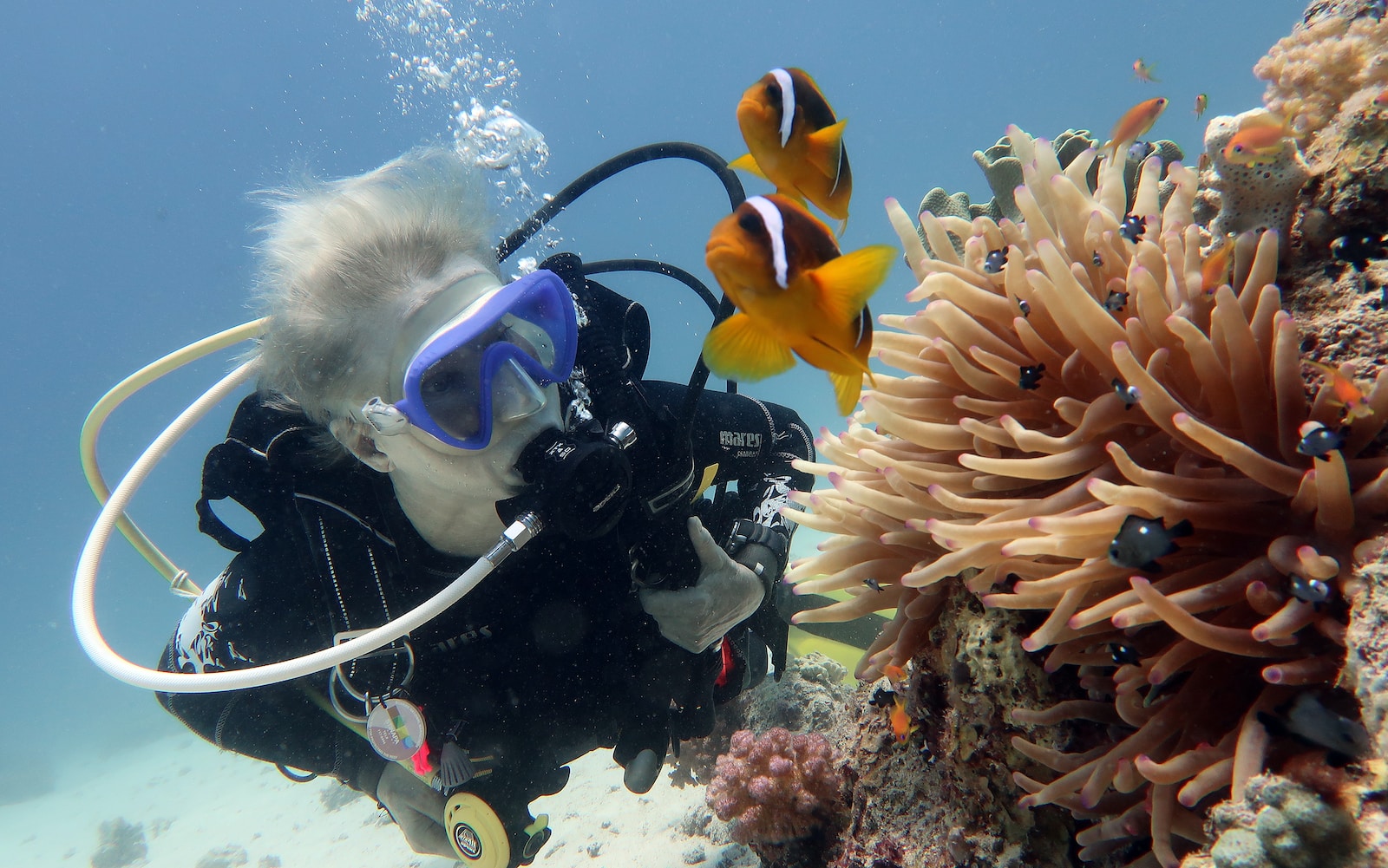The deep sea is one of the most mysterious and fascinating places on Earth. It is an unexplored world that holds within it a vast array of marine life, geological wonders, and sunken treasures. To scuba dive in these deep sea locations is to experience a level of adventure that few other activities can offer. From the coral reefs of Australia’s Great Barrier Reef to the shipwrecks off the coast of Indonesia, there are countless destinations worldwide for those seeking to explore the depths.
For those with a subconscious desire for freedom, diving into the deep sea offers an escape from the everyday routine and constraints of land-based life. The feeling of weightlessness as you float amongst schools of brightly colored fish or glide over ancient ruins provides an unparalleled sense of liberation. Deep sea diving also requires immense physical and mental strength, making it a challenge that tests your limits and pushes you beyond what you thought was possible. In this article, we will delve into some of the top deep sea scuba diving locations around the world and explore why they are worth adding to your bucket list.
Australia’s Great Barrier Reef
As the sun sets over Australia’s Great Barrier Reef, scuba divers from around the world flock to explore its mystical depths. The barrier reef is home to an abundance of marine life and coral formations that attract both novice and experienced divers alike.
To make the most out of a diving experience in this location, it is essential for divers to master proper scuba techniques. These include breathing control, buoyancy management, and effective communication with fellow divers. Moreover, given the increasing environmental concerns surrounding the Great Barrier Reef, conservation efforts are critical. Divers must be respectful of their surroundings and avoid any actions that could harm or disrupt the delicate ecosystem they are exploring. By following these guidelines, individuals can enjoy this natural wonder while safeguarding it for future generations.
The Bahamas’ Blue Holes
Exploring caverns and unique formations in the Bahamas’ Blue Holes can be an exhilarating experience for scuba divers. These underwater sinkholes are found throughout The Bahamas, with some reaching depths of over 600 meters. They offer a glimpse into ancient geological history that is truly awe-inspiring.
However, diving in these blue holes also presents several dangers to consider. One of the most significant risks when exploring these sites is getting lost or disoriented due to low visibility. Additionally, decompression sickness resulting from ascending too quickly from deep dives poses a serious threat to divers. As such, it’s essential to take proper safety measures when planning a dive at one of The Bahamas’ Blue Holes, including using specialized equipment designed specifically for cave diving and carefully monitoring dive time limits. By taking necessary precautions, experienced divers can safely explore these natural wonders and appreciate their magnificence firsthand.
Belize’s Barrier Reef
After exploring the unique Blue Holes of The Bahamas, scuba divers can venture to Belize’s Barrier Reef for another breathtaking underwater experience. Unlike the deep blue holes found in The Bahamas, Belize’s Barrier Reef is known for its vibrant and diverse ecosystem that spans over 190 miles. This juxtaposition between two distinct diving locations highlights the vast range of experiences available to adventure seekers.
When preparing for a dive at Belize’s Barrier Reef, it is important to have the proper scuba diving equipment such as wetsuits and fins due to varying water temperatures and currents. Additionally, the best time to visit this location is during April through June when visibility is high and weather conditions are optimal.
The Red Sea In Egypt
Known for its crystal-clear waters, vibrant coral reefs and diverse marine life, the Red Sea in Egypt is a world-renowned diving destination. With over 1,200 fish species and more than 20% of the world’s known marine flora and fauna, it offers divers an unforgettable experience. The visibility can reach up to 30 meters, making it perfect for underwater photography enthusiasts.
The best time to visit the Red Sea is between March and May or September through November when temperatures are cooler and there are fewer crowds. Diving conditions during these months offer calm seas with little wind or rain, providing ideal conditions for scuba diving. However, regardless of when you choose to go, be sure to check weather forecasts before planning your dive trip as the sea can become choppy without warning. Overall, the Red Sea in Egypt provides a unique opportunity to explore one of the most stunning underwater environments on earth.
The Galapagos Islands In Ecuador
The Galapagos Islands in Ecuador are a true gem of the world, offering a unique and unforgettable experience for scuba divers. As they say, “variety is the spice of life,” and that’s exactly what you’ll find here. Exploring wildlife on these islands provides an opportunity to see species that can’t be found anywhere else on earth. The volcanic formations create an unusually beautiful landscape, which makes it feel like one has traveled back in time while diving amongst them.
Scuba diving with sea lions, turtles and sharks in the Galapagos Islands will leave any diver spellbound. There’s something about being underwater alongside such beautiful creatures that ignites a sense of freedom within oneself. Every dive is different from the last; one day you may come across playful sea lions swimming around you as if inviting you into their world, while another day you’re observing graceful movements of giant manta rays gliding effortlessly past your vision. All in all, visiting the Galapagos Islands will give an unparalleled adventure to anyone seeking to explore nature’s beauty at its best.
The Cenotes Of Mexico
Continuing our deep sea adventure to scuba dive locations, we move from the Galapagos Islands in Ecuador to the Cenotes of Mexico. The Yucatan Peninsula is home to over 6,000 cenotes that were formed when limestone bedrock collapsed and filled with water. These natural formations are unique to this region and offer divers a chance to explore underwater caves, tunnels, and caverns.
Exploring cenote formations can be an unforgettable experience for any diver looking for something extraordinary. From brightly-lit sinkholes where sunlight illuminates crystal-clear waters to dark and mysterious underground rivers, these formations provide endless opportunities for adventure. Underwater photography in cenotes allows photographers to capture stunning images of stalactites and stalagmites as well as schools of fish swimming through intricate passageways. Divers who choose to visit the Cenotes of Mexico are sure to come away with memories that will last a lifetime.
The Wrecks Of Truk Lagoon In Micronesia
As one dives deeper into the Truk Lagoon, a sense of being transported back in time can be felt. The wrecks scattered across the seafloor are reminiscent of a bygone era, where battleships and aircraft carriers reigned supreme. It is as if one has stumbled upon an underwater museum – each wreck telling its own story of war and destruction.
Scuba gear essentials are necessary when exploring these wrecks, considering their depth and complexity. Wrecks like the Fujikawa Maru, which sits at 120 feet deep, require proper equipment for safe diving. However, it is not just about diving safely but also taking in the historical significance that these sites hold. Each vessel sunk in Truk Lagoon played a role in shaping World War II history and serves as a tangible reminder to future generations of the sacrifices made during wartime.
The Kelp Forests Of California
The kelp forests of California are a stunning underwater ecosystem that is home to a vast array of marine life. These towering seaweed plants provide shelter and food for countless species, making them an ideal location for scuba divers to explore biodiversity. With their unique structure and beautiful appearance, kelp forests have become a popular destination for underwater photographers looking to capture the beauty of these underwater gardens.
Exploring the kelp forests requires specific techniques to ensure minimal disturbance to the delicate environment. Scuba divers must rely on proper buoyancy control and slow movements as they navigate through the forest’s thick canopy. Underwater photography techniques such as using wide-angle lenses can help capture the grandeur of this unique landscape while minimizing damage caused by camera equipment. As visitors explore this magical world beneath the waves, it becomes clear why so many people feel drawn to its freedom – experiencing firsthand one aspect of Earth’s natural beauty in all its splendor is truly exhilarating.
The Caves Of The Yucatan Peninsula
Transport yourself back to the prehistoric era and wander through the magnificent caves of Yucatan Peninsula. Exploring stalagmites, stalactites, and fossils in these underground caverns is a once-in-a-lifetime opportunity that will leave you awe-inspired. The caves are renowned for their intricate formations and stunning beauty, which have been sculpted over millions of years.
Scuba diving in the crystal clear waters of Yucatan’s cenotes is an adventure that cannot be missed. These sacred sinkholes were believed by the ancient Mayans to be portals to the underworld. Today, they offer an unparalleled experience to divers who seek a unique underwater world filled with mystery and wonder. The cenotes are home to a vast array of marine life, including colorful fish species and delicate coral reefs. With its mesmerizing beauty and rich history, exploring Yucatan’s caves is sure to satisfy your craving for adventure while unlocking new perspectives on our planet’s geological past.
The Marine Life Of Indonesia’s Raja Ampat
After exploring the mysterious caves of Yucatan, it’s time to head over to Indonesia’s Raja Ampat and discover its rich marine life. Known as one of the most biodiverse regions in the world, Raja Ampat boasts an impressive array of underwater creatures that make for a captivating scuba diving experience. From tiny seahorses to majestic manta rays, this region is home to thousands of species waiting to be discovered.
Underwater photography enthusiasts will find themselves in paradise when diving in Raja Ampat. The colorful coral reefs serve as picturesque backgrounds for capturing stunning images of rare sea creatures such as pygmy seahorses and wobbegong sharks. However, with great beauty comes great responsibility – conservation efforts are crucial in preserving these ecosystems for future generations. Several organizations have taken up the task of safeguarding Raja Ampat’s unique biodiversity by promoting sustainable tourism practices and educating locals on environmental protection measures. By supporting these efforts, we can ensure that our freedom to explore these underwater wonders remains intact for years to come.
Conclusion
Scuba diving in the deep sea is a thrilling and awe-inspiring experience that allows individuals to explore the depths of our oceans. There are numerous scuba dive locations worldwide that offer unique underwater adventures, such as Australia’s Great Barrier Reef, The Bahamas’ Blue Holes, Belize’s Barrier Reef, The Red Sea in Egypt, and many others.
One interesting statistic to consider is that the world’s coral reefs cover only 0.2% of the ocean floor but they support more than 25% of all marine life. This highlights the importance of preserving these delicate ecosystems for future generations to enjoy. Furthermore, exploring these diverse underwater environments can also promote eco-tourism and contribute towards local economies.





